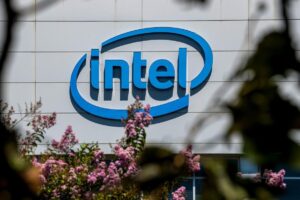Intel’s Strategic Shift: A New Chapter for Its Venture Capital Arm
Intel Corp., once a titan in the chip manufacturing sector, is making critical moves to redefine its business strategy. The tech giant has announced plans to transform its well-established venture capital arm, Intel Capital, into an independent entity with a new name—set to commence standalone operations in the latter half of 2025. This strategic shift is aimed at enhancing the capital-raising capabilities of the investment arm, allowing it to operate with greater freedom and flexibility in a rapidly evolving market.
A Legacy of Innovation and Investment
Intel Capital has long been a significant player in Silicon Valley, with a robust track record of investing over $20 billion in innovative tech companies over the last three decades. Its focus has predominantly been on technologies that have historically driven advancements in personal computing and server solutions—core areas that continue to be central to Intel’s revenue stream.
Some notable investments include major players like ASML Holding NV, Red Hat Inc., and VMware Inc., highlighting Intel Capital’s commitment to fostering technologies that resonate with its business objectives. The new structure aims to preserve this legacy while enabling a more agile approach to venture capital that can better respond to the fast-paced demands of the tech landscape.
An Anchor Investor with a Vision
In a recent statement, Intel confirmed it would remain an "anchor investor" in the new venture fund. With more than $5 billion in assets under management, Intel Capital will continue to have significant backing, ensuring the new entity has a robust foundation to pursue diverse investment opportunities while seeking additional capital from independent sources.
This transformation is crucial as Intel grapples with recent challenges, including a notable loss of market share. The semiconductor landscape has shifted dramatically, with competitors like Nvidia Corp. taking the lead, compelling Intel to streamline operations and focus on initiatives that will fortify its financial position.
Market Response and Future Endeavors
Intel’s restructuring comes at a time when it is actively seeking to narrow its focus and conserve cash, having already streamlined its workforce and cut various expenses. Industry insiders have indicated that Intel is also exploring potential sale options for its Altera unit, which specializes in programmable chips and was acquired for approximately $17 billion in 2015. This move could further enhance Intel’s liquidity, allowing it to reallocate resources toward high-impact projects.
Moreover, another vital asset is the self-driving technology firm, Mobileye Global Inc., which Intel took public in 2022. While maintaining most of the ownership, Mobileye is viewed as a valuable source of capital that could contribute significantly to Intel’s financial recovery and future growth initiatives.
Looking Ahead
As Intel embarks on this transformative journey, the focus will undoubtedly be on innovation, leadership, and strategic investments that resonate with the current state of the semiconductor industry. The new venture capital structure may open doors to collaborative projects with emerging tech firms and startups, enabling Intel to reassert its dominance in key technological areas and regain its competitive edge.
Investors and tech enthusiasts alike will be keeping a close eye on Intel’s maneuvers in the coming months. The shift represents not just a reorganization of resources, but a broader commitment to adapting and thriving in an increasingly competitive landscape. As we at Extreme Investor Network continue to monitor these developments, we invite our readers to stay informed and engaged with the ongoing evolution of one of Silicon Valley’s stalwart companies.

